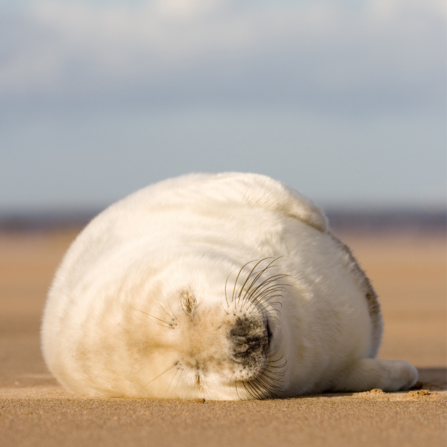First national Marine and Coastal Wildlife Code launched
Home to around 95% of Europe’s grey seal population and around 25% of Europe’s breeding seabirds, the British coastline supports many iconic species and habitats. It is also a special place for people to visit, and ongoing work to establish the King Charles III England Coast Path – which when complete will be the longest waymarked coastal path in the world at over 2,700 miles – is helping more people than ever to access these environments.

Grey seal pup asleep on beach by Tom Marshall
However, as visitors to our coastlines rise, it is important to ensure that our precious marine wildlife remains as undisturbed as possible. Young seals, for example, can use up vital energy if startled by people getting too close or being too noisy, meaning young pups struggle to haul out of the water to rest and digest their food. In a bad year of disturbance, only 25% are likely to survive to the age of 18 months.
Developed in collaboration with organisations including Whale and Dolphin Conservation, the RSPB, Shark Trust and Cornwall Seal Group Research Trust, the Marine and Coastal Wildlife Code includes advice for those walking along the coast or taking part in water-based activities such as kayaking, paddleboarding or jet skiing.
It offers specific guidance around animals such as seabirds, seals, dolphins, sharks and turtles, including information on breeding seasons and how species might react to disturbance, as well as how to report crimes against wildlife and what to do if you find an injured animal.
Take a look at the code here.
